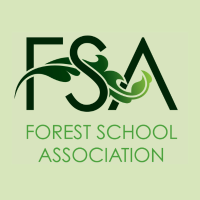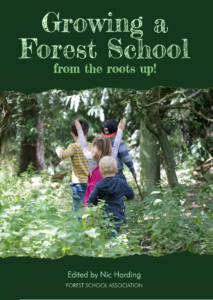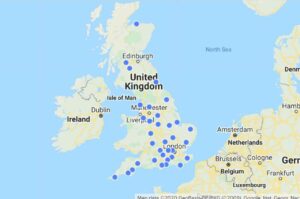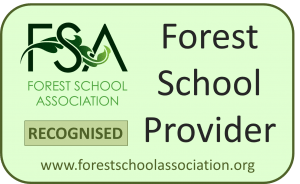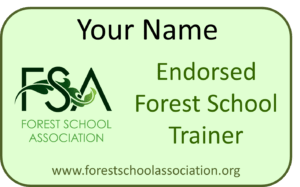[wpfilebase tag=file id=65 /]
Forest School Association guidance notes
The Forest School ‘handbook’
What is a Forest School handbook?
Why do Forest School practitioners need policies and procedures?
What is a ‘policy’?
What is a ‘procedure’?
Which policies and procedures might be needed?
Why does each Forest School have to write or adapt and update its own handbook?
Working within existing documentation
Working within a team of Forest School leaders
What is a Forest School handbook?
A Forest School handbook is a working document created by a particular Forest School Level 3 practitioner or a group of practitioners working within the same setting.
It contains policies and procedures in line with:
- statutory requirements and
- good practice, appropriate to their site and client group.
It is regularly reviewed and amended in response to:
- changes to risk assessments, routines and standard operating procedures resulting from reviewing sessions and programmes
- changes in good practice
- changes in legislation. top of page
Why do Forest School practitioners need policies and procedures?
Professionalism: having all appropriate paperwork in place demonstrates that the practitioner is well-prepared and considering good practice.
Confidence and flexibility: the process of planning adequately for all reasonably foreseeable potentially serious outcomes provides the practitioner with peace of mind. This lowers stress levels and allows focus on the unfolding processes and opportunities that arise during sessions. Planning also allows leaders to build confidence in their own decision-making capabilities. This, in turn, allows greater responsiveness and flexibility.
Planning and communication: the handbook becomes a tool for joint planning and communication with other staff and helpers at Forest School, and with managers, parents and carers, and client-group leaders. The short, clear policies and procedures that it contains explain what will happen and how things are undertaken at your Forest School.
Legal obligation: under Health and Safety law, ‘[i]t is an employer’s duty to protect the health, safety and welfare of their employees and other people who might be affected by their business. Employers must do whatever is reasonably practicable to achieve this’ (view source). Employers with more than five employees must have a written Health and Safety policy appropriate for their work situation (view source).
Organisations that work with children and vulnerable adults also need appropriate safeguarding policies.
Preventative measures against litigation: accidents and incidents do happen. If a practitioner has all necessary paperwork in place and up to date this provides evidence of their care and thought processes in managing health and safety, risk and safeguarding etc as far as is reasonably practical. top of page
A policy is a plan of action or statement of intent designed to guide decisions in order to achieve particular desired outcomes. In Forest School there may be various policies, each outlining a plan or intent on a particular issue. These might also take the form of statements added to existing organisational policies. Policies may be supported by and implemented through written procedures. top of page
A procedure is a specific series of actions or operations taken in specific order to obtain a consistent desired result. In Forest School there may be various procedures outlining specifically how we do things at Forest School. Procedures may link directly with policies and be included in the same document. top of page
Which policies and procedures might be needed?
Every Forest School is different and will need policies and procedures appropriate to their needs and situation. It is important to check that your statements and addendums are within the requirements of UK or national legislation. It’s good practice to also take in national guidance. top of page
| Key areas of legislation and national guidance | |
| Area | Links to area summaries |
|
|
|
Scotland
https://www.gov.uk/schools-colleges-childrens-services/safeguarding-children |
|
Scotland |
|
Scotland |
The list below provides some ideas of specific policies and procedures to consider, but should not be treated as a definitive list:
| Health and safety | |
| Policies | Related procedures |
|
|
| Safeguarding | |
| Policies | Related procedures |
|
|
| Learning and development | |
| Policies | Related procedures |
|
|
| Equality | |
| Policies | Related procedures |
|
|
| Access, environment & sustainability | |
| Policies | Related procedures |
|
|
| Terms and conditions | |
| Related procedures | |
|
|
| Related procedures | |
| Daily operating procedures | |
Why does each Forest School have to write or adapt and update its own handbook?
Relevance: the information within the handbook needs to be relevant and appropriate to your Forest School – the physical site and also the staff, client group/s and activities that are undertaken. Information needs to be specific to your Forest School Programme(s) circumstances. It’s the L3 Forest School practitioner’s responsibility (in consultation with managers) to ensure this is in place.
Realistic and practicable: policies and procedures should be realistic and practicable; your handbook should reflect your own Forest School practice. As your practice develops and changes, so too should your handbook. Your handbook should be considered a useful tool that is regularly reflected upon and updated.
Up to date: the date of each policy and procedure should be identified. Calendar dates fpr review should be specified, at least annually and/or after a change, significant incident or near miss.
Ownership: authorship and/or adoption by managers should be recorded for each policy and procedure and subsequent changes. top of page
Working within existing documentation
It is likely (unless you are freelance) that your organisation or school will already have certain policies and procedures in place. As a Forest School practitioner it is essential that you understand the guidance presented in these documents and review whether they adequately cover the needs of working at a Forest School. If not, you may need to write an addendum to how certain aspects of the policy/procedure are met during Forest School. For example, most school policies and procedures may not refer to how fire is used to support learning and how it is managed when having campfires with pupils. You will also want to ensure that relevant information about the existing organisation policy is summarised for your Forest School staff and helpers. top of page
Working within a team of Forest School leaders
If you work with other Forest School leaders at your workplace it may be beneficial to undertake the reviewing of the Forest School handbook together. In this way you can share value judgements and establish a consistent approach to the protocols in practice as well as in writing. top of page
